From Fields to Folklore: The Enchanting Stories Behind the Former Site of Tonghai Reclamation
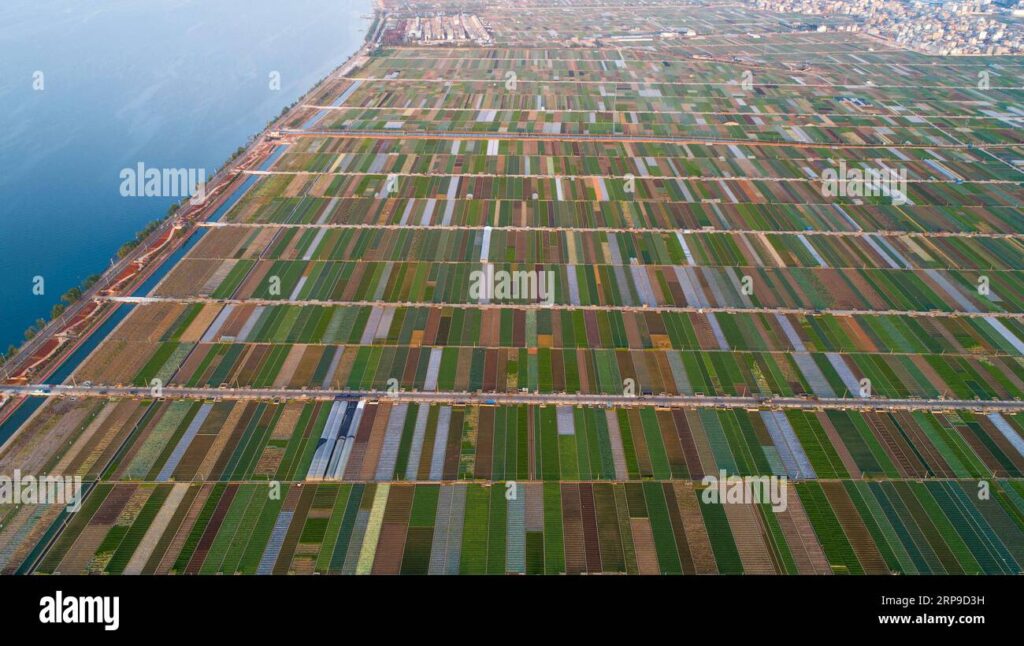
An Essential Guide to Visiting Former Site Of Tonghai Reclamation
Nestled within the enchanting landscapes of Yunnan Province, the Former Site of Tonghai Reclamation (通海垦牧公司旧址) offers an intriguing glimpse into a bygone era of agricultural innovation and cultural fusion. This historical site is a testament to the region’s rich agricultural past, where the reclamation of land transformed the local economy and way of life. What sets this site apart is not just its historical significance but the vivid tapestry of stories woven from the interplay of diverse cultures that once flourished here.
In this essential guide, you’ll discover the captivating history of the Tonghai Reclamation project, explore the architectural remnants that whisper tales of the past, and immerse yourself in the vibrant local culture that continues to thrive in the area. We’ll also provide practical tips on how to navigate the site, including the best times to visit, nearby attractions that complement your experience, and culinary delights that should not be missed during your journey. Whether you are a history enthusiast, a culture seeker, or simply an adventurous traveler, the Former Site of Tonghai Reclamation promises a memorable experience that connects you with the heart of Yunnan’s agricultural heritage.
In This Guide
- An Essential Guide to Visiting Former Site Of Tonghai Reclamation
- The Rich History and Legends of Former Site Of Tonghai Reclamation
- Main Highlights: What You Absolutely Can’t Miss
- Planning Your Visit: A Practical Guide
- Tickets: Prices, Booking, and Tips
- How to Get There: A Complete Transportation Guide
- Local Cuisine and Accommodation Nearby
- Frequently Asked Questions
- Final Thoughts on Your Trip
The Rich History and Legends of Former Site Of Tonghai Reclamation
A Historical Tapestry of Tonghai Reclamation
The Former Site of Tonghai Reclamation (通海垦牧公司旧址) is an intriguing blend of natural beauty and rich historical significance. Nestled in the picturesque Yunnan Province, this site encapsulates centuries of cultural evolution, agricultural innovation, and legendary tales that echo through the ages.
The Early Beginnings: A Landscape Transformed
The history of Tonghai is deeply rooted in its geographic and cultural context. Originally inhabited by the Yi ethnic group, the area was characterized by its lush landscapes and fertile grounds. In the late 19th and early 20th centuries, the Qing Dynasty initiated agricultural reclamation projects to enhance productivity and bolster the economy. The Tonghai Reclamation Company was established as part of this initiative, fundamentally transforming the region’s agricultural landscape by converting wetlands into arable land. This period marked a significant shift, as traditional farming practices were modernized, leading to increased crop yields and the establishment of new communities.
The Rise of the Reclamation Company
By the 1920s, the Tonghai Reclamation Company had become a cornerstone of local agricultural development. Its innovative irrigation systems and crop rotation methods not only boosted local agriculture but also attracted migrants seeking economic opportunities. The site became a bustling hub where diverse cultures mingled, with farmers from different regions sharing techniques and traditions. The output from this reclamation era contributed significantly to the local economy, with products such as rice and vegetables becoming staples in the region.
Legends of the Land: Myths and Folklore
As with many historical sites, the Former Site of Tonghai Reclamation is steeped in legends that enrich its narrative. One popular tale speaks of a benevolent spirit, “The Guardian of the Fields,” believed to bless the lands with fertility and prosperity. According to local lore, this spirit would appear as a luminous figure during harvest seasons, guiding farmers to the most fertile areas. Many villagers still honor this legend through annual rituals, celebrating the bond between nature and agriculture.
Another compelling story revolves around the famed “Tonghai Dragon,” a mythical creature said to dwell in the nearby Fuxian Lake. Legend has it that the dragon would rise to the surface during droughts, providing rain to the parched fields. This tale highlights the community’s deep connection to their environment and the reliance on both mythical and practical solutions to sustain their livelihoods.
A Modern Reflection: Preserving Heritage and Culture
Today, the Former Site of Tonghai Reclamation stands as a testament to the region’s agricultural history and its enduring cultural significance. The remnants of the reclamation infrastructure, including irrigation channels and old warehouses, serve as a reminder of the innovative spirit that shaped the landscape. Local efforts to preserve this site and its history have turned it into a cultural hub, attracting visitors eager to explore its rich past.
Conclusion: A Journey Through Time
Visiting the Former Site of Tonghai Reclamation offers an opportunity to step back in time and experience the convergence of history, agriculture, and legend. As you stroll through the remnants of this once-bustling hub, you can almost hear the whispers of the past—the laughter of farmers, the splashing of the dragon, and the blessings of the Guardian of the Fields. This enchanting site invites international travelers to immerse themselves in the rich tapestry of Tonghai’s heritage, making it a must-visit destination in Yunnan Province.
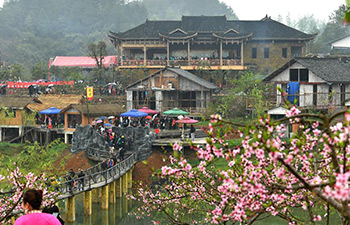
Former Site Of Tonghai Reclamation.
Main Highlights: What You Absolutely Can’t Miss
Tonghai Ancient City: A Walk Through Time
As you wander through the cobblestone streets of Tonghai Ancient City, you’ll feel as if you’ve stepped into a living museum. The beautifully preserved old houses echo stories of the past, showcasing traditional architecture that reflects the region’s rich cultural heritage. Stroll along Wenmiao Street, where you can savor local snacks like chilled Ximen tofu and immerse yourself in the sounds of ancient teahouse melodies.
Practical Tip: Visit during the early morning or late afternoon to avoid the crowds and capture stunning photos of the golden hour light illuminating the ancient facades.
Fuxian Lake: Nature’s Serenity
Dubbed “China’s No. 1 Freshwater Lake,” Fuxian Lake is a must-visit for nature lovers. Its crystalline waters are ideal for a variety of water activities, including kayaking and glass-bottom boat rides. Don’t miss watching the sunset here, where the lake transforms into a canvas of pink and orange hues.
Practical Tip: Bring along a picnic to enjoy on the lakeshore, and try the local specialty, copper pot fish, at one of the nearby lakeside restaurants.
Chengjiang Fossil Museum: A Journey Through Time
Step back 500 million years at the Chengjiang Fossil Museum, where you can explore some of the world’s most significant paleontological discoveries. The museum features impressive exhibits, including the “underwater disco” fossil wall that will captivate visitors of all ages.
Practical Tip: Check the museum’s schedule for guided tours that provide deeper insights into the exhibits, making your visit even more informative.
Ailao Mountain: Adventure Awaits
For those seeking adventure, Ailao Mountain offers breathtaking hiking trails and stunning vistas. The Shimen Gorge trail is particularly popular for its picturesque views and the chance to witness a sea of clouds. Don’t forget your camera—the views are Instagram-worthy!
Practical Tip: Wear sturdy hiking shoes and carry plenty of water, as some trails can be strenuous. Early morning hikes are recommended to catch the mystical sunrise.
Tonghai Xiushan Park: Relax and Rejuvenate
Escape the hustle and bustle by visiting Tonghai Xiushan Park, a peaceful retreat filled with lush greenery and serene pathways. The park provides an excellent backdrop for a leisurely stroll or a quiet moment of reflection.
Practical Tip: Bring a book or favorite snack to enjoy on one of the benches, and take the time to observe the local flora and fauna.
Local Markets: A Taste of Tonghai
Experience the vibrant atmosphere of Tonghai’s local markets, especially on Sundays when the market is bustling with activity. Here, you can find handmade crafts, local produce, and delicious street food. It’s the perfect place to pick up unique souvenirs and taste authentic local flavors.
Practical Tip: Bargaining is common, so don’t hesitate to negotiate prices. Sample the street food but ensure you try the iced porridge—it’s a refreshing treat, especially in warm weather.
Nightlife: Musical Encounters
As night falls, explore the local nightlife scene. Head to Nie Er Music Square, where you can enjoy live music performances and soak in the vibrant atmosphere. The square is a tribute to the famous musician Nie Er and often hosts cultural events, making it an ideal spot for an evening stroll.
Practical Tip: Check the local event calendar for special performances or festivals happening during your visit to enhance your experience.
By visiting these highlights, you’ll create unforgettable memories in Tonghai, blending nature, culture, and history in a captivating journey.
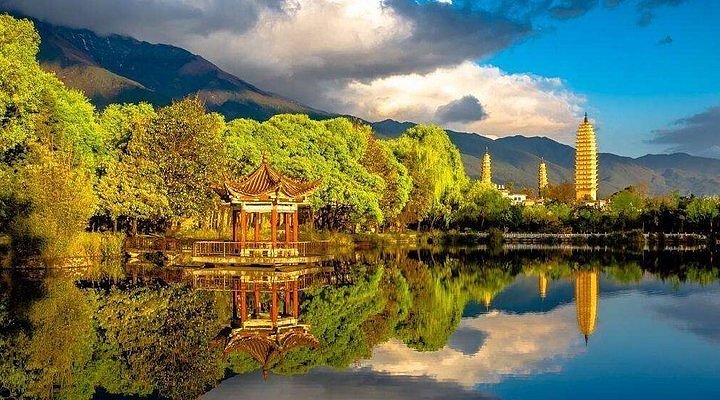
Former Site Of Tonghai Reclamation.
Planning Your Visit: A Practical Guide
Best Time to Visit
The Former Site of Tonghai Reclamation is best visited during the spring (March to May) and autumn (September to November) months. During these times, the weather in Yunnan Province is mild and pleasant, making it ideal for exploring the area’s rich history and stunning landscapes. Summer can be hot and crowded, while winter may bring cooler temperatures, so plan your visit accordingly to enjoy the best experience.
Recommended Itinerary
Day 1: Historical Exploration
– Morning: Arrive in Tonghai County and start your day with a visit to the Former Site of Tonghai Reclamation. Take your time exploring the well-preserved architecture and historical remnants of the area.
– Lunch: Enjoy a local dish, such as copper pot fish, at a nearby restaurant.
– Afternoon: Head to Tonghai Ancient City, where you can stroll through the quaint streets lined with traditional houses.
– Evening: Dine at a local eatery and enjoy the ambiance of the ancient city at night.
Day 2: Nature and Culture
– Morning: Visit Fuxian Lake for a scenic boat ride, and take in the breathtaking views of the surrounding hills.
– Lunch: Taste some local specialties at one of the lakeside restaurants.
– Afternoon: Explore the nearby Luchong Scenic Area or hike up to Hongta Mountain for panoramic views of the region.
– Evening: Return to Tonghai, perhaps attending a local market if it coincides with your visit.
Photography Tips
- Golden Hour: The best lighting for photography is during the golden hours—early morning or late afternoon. Capture the unique architecture of Tonghai Ancient City bathed in warm light.
- Wide-Angle Shots: Utilize a wide-angle lens to capture the expansive landscapes of Fuxian Lake and the grandeur of the mountains.
- Candid Moments: Take candid shots of locals going about their daily life in the market or at the lakeside to capture the essence of the region.
- Cultural Details: Focus on intricate details of architecture and local crafts, as they tell the story of Tonghai’s rich heritage.
What to Wear
- Comfortable Footwear: As you’ll be walking a lot, wear comfortable shoes suitable for both cobblestone streets and hiking.
- Layered Clothing: The weather can vary, so dress in layers. A light jacket or sweater is advisable for cooler mornings and evenings.
- Sun Protection: Bring a wide-brimmed hat and sunscreen, especially if you plan to spend time outdoors at Fuxian Lake.
Insider Tips
-
Local Market Day: If your visit coincides with a Sunday, don’t miss the local market where you can find unique handicrafts at bargain prices. It’s a great way to support local artisans.
-
Culinary Delights: Make sure to try the copper pot potato rice, a local specialty that pairs beautifully with the region’s fresh fish.
-
Cultural Immersion: Visit a local teahouse to experience traditional tea ceremonies and engage with locals who can share stories about the area’s history.
-
Explore Beyond the Main Sites: Don’t hesitate to wander off the beaten path. The hidden alleys of Tonghai Ancient City often reveal charming spots and lesser-known historical sites.
-
Stay Hydrated: The altitude and outdoor activities can lead to dehydration. Carry a water bottle and sip regularly, especially if you’re hiking in the mountains.
By following this guide, you’ll be well-prepared to explore the Former Site of Tonghai Reclamation and embrace its historical and cultural richness!
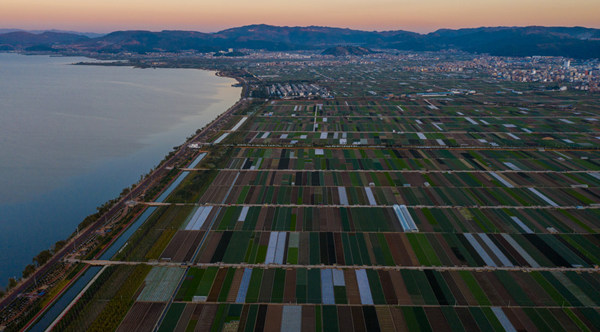
Former Site Of Tonghai Reclamation.
Tickets: Prices, Booking, and Tips
Visiting the Former Site of Tonghai Reclamation is a journey back in time, where you can immerse yourself in the rich history and cultural heritage of this unique location. Here’s everything you need to know about ticket prices, booking, and essential tips for your visit.
Ticket Information
| Ticket Type | Price (CNY) | Includes |
|---|---|---|
| Adult Admission | Free | Access to the site and surrounding areas |
| Guided Tour (Optional) | 50 | Guided exploration with historical insights |
| Photography Permit | 30 | Allows professional photography within the site |
Booking Tips
- Advance Booking: While general admission is free, it is recommended to book guided tours and photography permits in advance to ensure availability, especially during peak travel seasons. You can easily reserve your spot through local tourism websites or directly at the site.
- Best Time to Visit: To avoid crowds, consider visiting on weekdays or early mornings.
How to Book
- Online Reservations: Check platforms like Trip.com or local tourism websites for guided tours and permits.
- On-Site Booking: If you prefer spontaneity, you can also purchase tickets and permits directly at the location, though this might risk unavailability during busy times.
- Local Tour Operators: Consider contacting local travel agencies for comprehensive packages that include transportation, guided tours, and meals.
Additional Tips
- Prepare for Your Visit: Wear comfortable shoes, as exploring the site may involve walking on uneven terrain.
- Respect Local Customs: This site holds cultural significance, so be mindful of your surroundings and follow any guidelines provided by your guide.
- Enjoy the Experience: Take your time to soak in the history and beauty of the site. Don’t forget to bring a camera to capture the picturesque views!
With this information in hand, you’re well-equipped to enjoy a fascinating visit to the Former Site of Tonghai Reclamation. Happy travels!
How to Get There: A Complete Transportation Guide
From the Nearest Major City
Arrival in Kunming
The closest major city to the Former Site of Tonghai Reclamation is Kunming, the capital of Yunnan Province. Most international travelers will likely arrive at Kunming Changshui International Airport (KMG). From here, you can continue your journey to Tonghai County.
By High-Speed Train
One of the most efficient ways to travel from Kunming to Tonghai is via high-speed train. The journey takes approximately 1.5 to 2 hours. You can catch a train from Kunming South Railway Station to Tonghai Railway Station. Tickets typically range from ¥45 to ¥100 (around $7 to $15 USD) depending on the service class.
By Bus
Alternatively, you can take a long-distance bus from Kunming. Buses depart from the Kunming East Bus Station, and the ride to Tonghai takes about 2 to 2.5 hours. Tickets are usually priced around ¥30 to ¥50 (approximately $5 to $8 USD). Buses run frequently throughout the day, making this a flexible option.
By Car
If you prefer to drive, renting a car is a great way to explore the scenic landscapes of Yunnan. The distance from Kunming to Tonghai is about 90 kilometers (56 miles) via the G56 expressway, and the drive takes around 1.5 hours. Ensure you have a valid driver’s license and familiarize yourself with local driving regulations.
Getting Around the Scenic Area
Local Transportation Options
Once you arrive in Tonghai, getting around the area is relatively easy. The Former Site of Tonghai Reclamation is located close to the town center, making it accessible by foot or short taxi rides.
Walking Tours
Exploring the Former Site of Tonghai Reclamation on foot is highly recommended. The scenic area is rich with historical architecture and beautiful landscapes, making it perfect for leisurely walks. Don’t forget to bring your camera to capture the picturesque surroundings!
Taxis and Ride-Sharing
Taxis are readily available throughout Tonghai. Fares are quite affordable, and a typical ride within the town costs around ¥10 to ¥30 (approximately $1.50 to $5 USD). Alternatively, you can use ride-sharing apps that operate in the area for convenient transportation.
Bicycle Rentals
For a more adventurous experience, consider renting a bicycle. There are several rental shops in Tonghai, and cycling around the town allows you to explore at your own pace while enjoying the fresh air and local sights.
Practical Tips
- Language: Basic English may not be widely spoken in Tonghai, so having a translation app can be extremely helpful.
- Cash: While credit cards are accepted in some places, it’s advisable to carry cash (Chinese Yuan) for small purchases and local markets.
- Weather: Check the weather forecast before traveling, as conditions can vary. Dress in layers and bring an umbrella during the rainy season (June to September).
With its rich history and stunning landscapes, the Former Site of Tonghai Reclamation is a must-visit destination for travelers exploring Yunnan Province. Enjoy your journey!
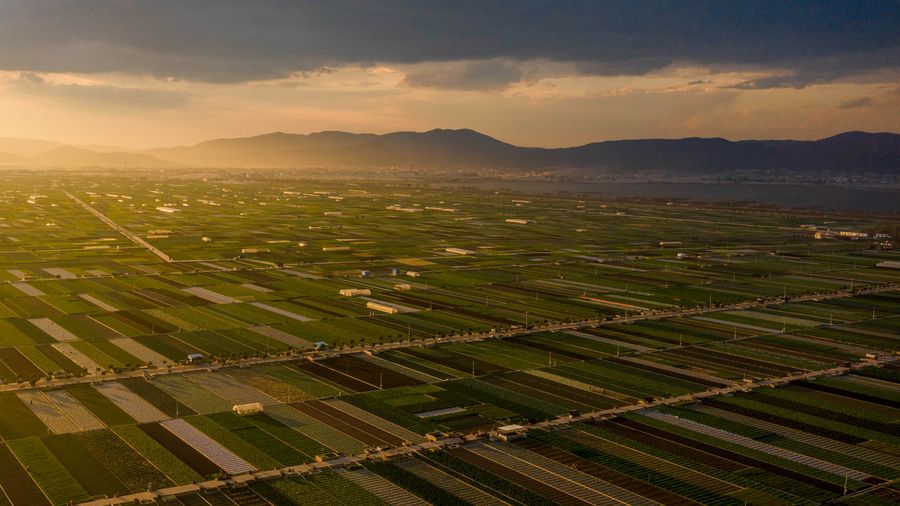
Former Site Of Tonghai Reclamation.
Local Cuisine and Accommodation Nearby
When exploring the Former Site of Tonghai Reclamation, indulging in the local cuisine is a delightful way to complement your visit. The flavors of Yunnan Province are vibrant and diverse, reflecting its rich agricultural heritage and cultural influences. Here are some must-try dishes and accommodation options to enhance your stay.
Local Delicacies to Savor
-
Copper Pot Fish (铜锅鱼)
A signature dish of the region, this flavorful fish is cooked in a copper pot, enhancing its taste and aroma. Served with a fragrant broth, it’s typically accompanied by rice soaked in the delicious fish soup. Make sure to enjoy it while sitting lakeside for the full experience! -
Cold Rice Noodles (凉米线)
A refreshing dish perfect for warmer days, cold rice noodles are tossed in a tangy sauce made from sweet and sour papaya vinegar. Topped with fresh vegetables, this dish is both satisfying and light, ideal for a quick lunch after a day of exploring. -
Iced Porridge (冰粥)
This unique dessert combines rose sugar, glutinous rice, and crushed ice, offering a sweet respite from the Yunnan heat. Its texture and flavor create a delightful treat that locals often enjoy during the summer months. -
Copper Pot Potato Rice (铜锅土豆饭)
Another local favorite, this dish features rice cooked with tender potatoes in a copper pot, infusing the rice with a rich, savory flavor. It’s often served with pickled vegetables, making it a hearty choice for those looking for comfort food.
Accommodation Options Near the Site
-
Luxury: Hilton Yuxi Fuxian Lake
Nestled by the stunning Fuxian Lake, this luxurious hotel offers elegant rooms with breathtaking views. Enjoy the on-site spa, gourmet dining options, and easy access to local attractions, making it a perfect choice for a lavish retreat. -
Boutique: Tonghai Ancient City Hotel
This charming boutique hotel captures the essence of Yunnan’s rich cultural heritage. With its beautifully decorated rooms inspired by traditional architecture, guests can enjoy personalized service and a cozy atmosphere, just a short stroll from the ancient city’s highlights. -
Budget: Yuxi Youth Hostel
For travelers on a budget, this vibrant youth hostel provides a friendly and social environment. Dormitory-style accommodations are available, along with private rooms. The hostel organizes group activities and local tours, making it a great base for young adventurers. -
Mid-Range: GreenTree Inn Yuxi Station Hotel
Offering comfortable rooms with modern amenities, this mid-range hotel is conveniently located near Yuxi Railway Station. Its affordability and proximity to local dining options make it an ideal choice for those seeking value without compromising comfort.
By immersing yourself in the local flavors and staying at one of these recommended accommodations, your visit to the Former Site of Tonghai Reclamation will be a memorable journey through the heart of Yunnan’s culture and hospitality.
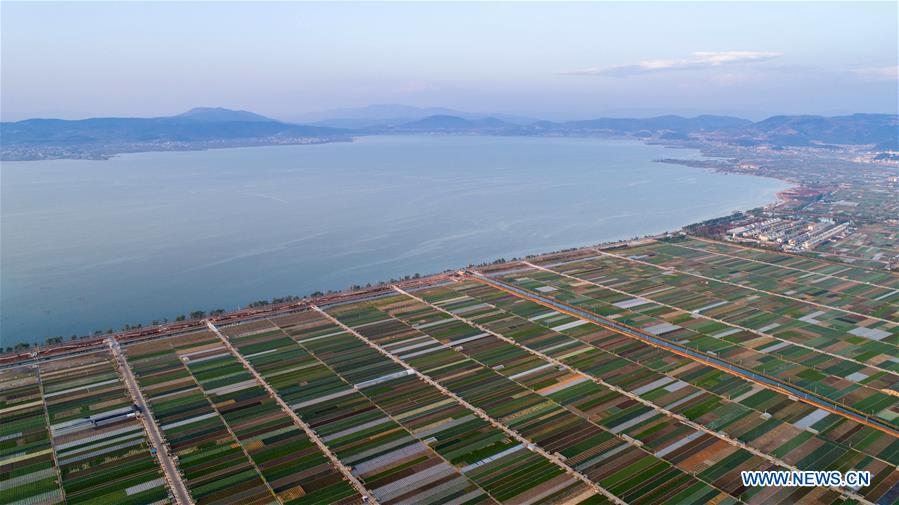
Former Site Of Tonghai Reclamation.
Frequently Asked Questions
Frequently Asked Questions
1. Is the Former Site of Tonghai Reclamation suitable for children and the elderly?
Yes, the site is accessible and suitable for families with children and elderly visitors. The paths are relatively flat, and there are plenty of resting spots to enjoy the scenery. However, it’s advisable for elderly visitors to wear comfortable shoes and take their time exploring the area.
2. Are there English signs and information available?
While most of the main attractions and historical markers have signs in Chinese, you may find some information available in English, especially around popular tourist spots. To enhance your experience, consider bringing a translation app or guidebook to help navigate.
3. How much time should I plan to spend at the site?
Plan to spend approximately 1 to 2 hours at the Former Site of Tonghai Reclamation. This will give you enough time to explore the area, take photos, and soak in the historical significance of the site. If you wish to delve deeper into the history and enjoy a leisurely stroll, consider allocating more time.
4. What are the best ways to get to the site from Tonghai Ancient City?
The Former Site of Tonghai Reclamation is a short drive from Tonghai Ancient City. You can take a taxi or use local transportation services. If you prefer cycling, renting a bike is a delightful way to enjoy the scenic views along the way.
5. Are there facilities such as restrooms or food vendors at the site?
There are limited facilities at the Former Site of Tonghai Reclamation, including basic restrooms. However, it is advisable to bring water and snacks, as nearby food vendors may not always be available. Exploring the surrounding areas might provide more dining options.
6. Is there an admission fee to visit the site?
There is no admission fee to enter the Former Site of Tonghai Reclamation, making it an affordable destination for travelers. It’s a great way to enjoy historical significance without the burden of entrance costs.
7. What is the best time to visit the site?
The best time to visit is during the spring and autumn months (April to June and September to November) when the weather is mild and pleasant. Summers can be hot, while winters may bring chilly temperatures, so dress accordingly based on the season.
8. Can I take photographs at the Former Site of Tonghai Reclamation?
Absolutely! Photography is encouraged, as the site offers stunning views and historical elements that make for great photos. Just be mindful of any restrictions that may apply to specific areas or structures, and always respect the local customs.
Final Thoughts on Your Trip
As your journey to the Former Site of Tonghai Reclamation comes to a close, take a moment to reflect on the unique blend of natural beauty and rich cultural heritage that this area encapsulates. From the serene shores of Fuxian Lake to the historic streets of Tonghai Ancient City, each experience offers a glimpse into the enduring legacy of this remarkable region.
Engaging with the local flavors, such as the delightful copper-pot fish and chilled rice noodles, provides not just nourishment but a taste of Yuxi’s vibrant culinary scene. Meanwhile, the echoes of the past resonate through the ancient architecture and the timeworn streets, allowing you to connect deeply with the traditions that have shaped this landscape.
Whether you found tranquility amid the picturesque scenery or excitement in the bustling market streets, it’s clear that Tonghai is a place where memories are made and stories are born. As you depart, remember that adventure awaits around every corner, and the spirit of Yunnan will linger in your heart long after you’ve left.
So, take these memories with you and allow them to inspire your next journey—wherever that may lead. Safe travels!